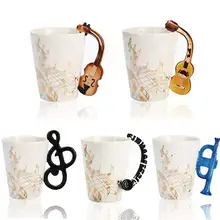Bamboo placemats are a versatile addition to any dining setting. They are functional, stylish, and environmentally friendly. They come in various designs and shapes to cater to multiple preferences. The natural aesthetic of bamboo enhances the dining experience while providing a durable and practical surface for meals. This article will delve into the types, applications, and characteristics of bamboo placemats.
Types of bamboo placemats
Bamboo placemats come in an array of styles and shapes. Some common types are rectangular and round bamboo placemats. The rectangular ones are traditional and fit the majority of table settings, while the round ones offer a unique aesthetic and are ideal for circular tables. The design can also vary, with some placemats featuring a simple, natural look while others have intricate woven patterns. Woven bamboo placemats are especially popular because of their unique texture and elegantly rustic appearance. Other types of bamboo placemats include colored ones. For example, blue bamboo placemats can add a pop of color to a table setting, making it more lively and engaging. These colored placemats are often dyed using natural pigments, ensuring that they remain eco-friendly.
Applications of bamboo placemats
The primary function of bamboo placemats is to protect the dining table from food spills, heat damage from hot plates, and scratches from cutlery. However, they also serve an aesthetic purpose. They can enhance the overall look of the dining area, providing a touch of nature and refinement. Bamboo placemats are not limited to dining tables alone. They can be used on coffee tables, side tables, or even as a decorative element on kitchen counters. Depending on their design, they can fit into different decor styles, from minimalist and contemporary to rustic and traditional.
Japanese bamboo placemats are an example of a cultural application. In Japan, these placemats are often used in traditional dining settings, tea ceremonies, and other cultural events. They are valued for their natural beauty and simplicity, reflecting the Japanese aesthetic of 'wabi-sabi' – the appreciation of imperfection and transience.
Features of bamboo placemats
One of the main features of bamboo placemats is their durability. Bamboo is a resilient material that can withstand daily use without easily wearing out. It is also heat-resistant, providing an effective barrier between hot dishes and the table surface. Another notable feature of bamboo placemats is their eco-friendliness. Bamboo is a sustainable resource due to its fast growth rate and minimal need for pesticides and irrigation. Therefore, opting for bamboo placemats is a conscious choice for environmental conservation.
Moreover, bamboo placemats are easy to clean and maintain. Food and beverage spills can be quickly wiped off, and the placemats can be occasionally washed with a mild detergent. However, they should not be soaked in water for prolonged periods or placed in a dishwasher, as this can cause the bamboo to warp or crack.










































 浙公网安备 33010002000092号
浙公网安备 33010002000092号 浙B2-20120091-4
浙B2-20120091-4